How to Avoid Clutter After Decluttering: Simple Steps
Category: Lifestyle
Take Control: How to Avoid Clutter After Decluttering
If you've recently invested time and energy into decluttering your home, you already know the relief that comes with a simplified space. Yet, the challenge many face is maintaining that clarity—how do you keep clutter at bay after you've done the hard work? This guide is for you: whether you're a minimalist enthusiast or just starting to explore simplifying your lifestyle, you'll find practical, actionable strategies to sustain your clear space. We understand your frustration with clutter creeping back unexpectedly, despite your best intentions. Here, we focus on how to build habits, set boundaries, and create systems that prevent clutter rather than merely fight it. Unlike other generic advice, this article blends minimalist philosophy with everyday practicality, nurturing your desire for a lasting, calm environment that supports your well-being. Read on to discover tested methods for keeping clutter away and embracing a fulfilling, simplified life.
- Take Control: How to Avoid Clutter After Decluttering
- Understanding the Root Causes of Clutter
- Establishing Daily and Weekly Decluttering Habits
- Implementing the One-In, One-Out Rule: Preventing New Clutter with Mindful Consumption
- Organizing with Purpose: Designing Storage and Organization Systems That Fit Your Space and Lifestyle
- Setting Boundaries for Incoming Items: Strategies to Control Mail, Gifts, Purchases, and Digital Clutter
- Mindful Consumption and Intentional Purchasing: Evaluating New Items Critically to Reduce Impulse Buys
- Creating Decluttering Checkpoints: Scheduling Seasonal or Quarterly Reviews to Reassess Possessions and Prevent Buildup
- Involving the Household or Family in Clutter Prevention: How Shared Responsibility and Communication Help Maintain a Clutter-Free Home
Understanding the Root Causes of Clutter
To effectively avoid clutter after decluttering, it’s essential to recognize why clutter tends to return in the first place. Clutter is rarely just about the stuff—it’s deeply connected to our habits, emotional attachments, and lifestyle patterns. Without addressing these underlying causes, even the most thorough decluttering session is destined to be temporary.
1. Habits That Fuel Clutter
One of the biggest culprits behind the reappearance of clutter is our everyday habits. For instance, coming home and immediately placing mail or bags on the nearest surface instead of designated spots can slowly accumulate piles. Mindless buying sprees or hesitation in letting go of items contributes as well. Changing these patterns starts with creating intentional habits, such as:
- Allocating a daily 5-minute "tidy-up" routine
- Creating specific drop zones near entryways
- Being conscious of purchases by asking if each item adds real value to your life
2. Emotional Attachments and Sentimentality
Many struggle to part with belongings due to emotional connections — gifts, souvenirs, or “just-in-case” items that represent memories or security. This emotional clutter can quietly grow and crowd your space without awareness. To maintain a clear environment, develop practices like:
- Reflecting on the true purpose of each item before deciding to keep it
- Taking photos of sentimental objects instead of holding onto the physical item
- Setting limits on how many mementos or keepsakes you truly need
3. Lifestyle Factors and Environmental Influences
Your daily routine and living environment play significant roles in clutter buildup. Busy schedules can lead to neglecting clutter hotspots, while shared spaces with family or roommates may cause conflicting organizational standards. Additionally, life transitions—like moving, remote work, or welcoming a child—often bring unexpected clutter challenges. Proactively adapting your space and systems to fit your lifestyle is crucial for preventing clutter, including:
- Customizing storage solutions to your changing needs
- Communicating clear expectations with those you share space with
- Periodically re-evaluating your environment to eliminate unnecessary items
By gaining insight into these root causes, you empower yourself to adopt smarter, lasting strategies that stop clutter before it starts, transforming your home into a sanctuary of simplicity and calm.
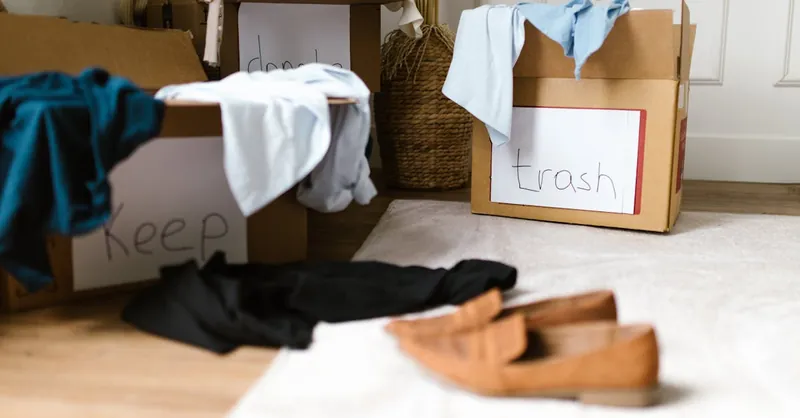
Image courtesy of RDNE Stock project
Establishing Daily and Weekly Decluttering Habits
Developing consistent daily and weekly decluttering habits is one of the most effective ways to prevent clutter from creeping back into your home. Rather than waiting for mess to build up, integrating small, manageable routines into your schedule helps you stay proactive and maintain a clutter-free environment effortlessly. These habits create momentum that supports your minimalist lifestyle and reinforces the clarity you've worked hard to achieve.
Daily Decluttering: Small Moments, Big Impact
Incorporate a brief 5 to 10-minute daily tidy-up session focused on typical clutter hotspots such as kitchen counters, entryways, and bathroom surfaces. This habit prevents piles from accumulating and keeps your space feeling fresh. Important tips for daily decluttering include:
- Set a consistent time—right after breakfast or before bed—to build predictability.
- Target one or two clutter zones per day rather than overwhelming yourself.
- Use a basket or box for items that belong elsewhere, and return them promptly.
- Handle paper clutter immediately by sorting mail, recycling junk, and filing important documents right away.
By turning daily decluttering into a mindful ritual, you create structure that naturally discourages mess from forming.
Weekly Decluttering: A Deeper Reset
While daily efforts manage surface clutter, a weekly decluttering session allows for a more thorough assessment of your space. Dedicate 20 to 30 minutes each week to areas that need attention, such as drawers, closets, or digital files. Steps to optimize weekly decluttering include:
- Rotate focus areas to cover your entire home over time without feeling overwhelmed.
- Evaluate items based on current usefulness and sentiment, letting go of anything that no longer serves you.
- Rearrange and reset storage systems as needed to maintain easy access and organization.
- Invite family members or housemates to participate, fostering a shared responsibility for clutter-free living.
Creating Clutter-Free Routines That Stick
To maximize success, pair decluttering habits with existing routines like cleaning, meal prep, or winding down for the day. Use reminders or checklist apps to stay consistent until these practices become second nature. Remember, the goal isn’t perfection but mindful maintenance—a little effort daily prevents clutter from becoming a burdensome chore.
By embracing these practical daily and weekly decluttering habits, you empower yourself to keep clutter in check long-term, transforming your living space into a true embodiment of minimalist calm and intentional simplicity.
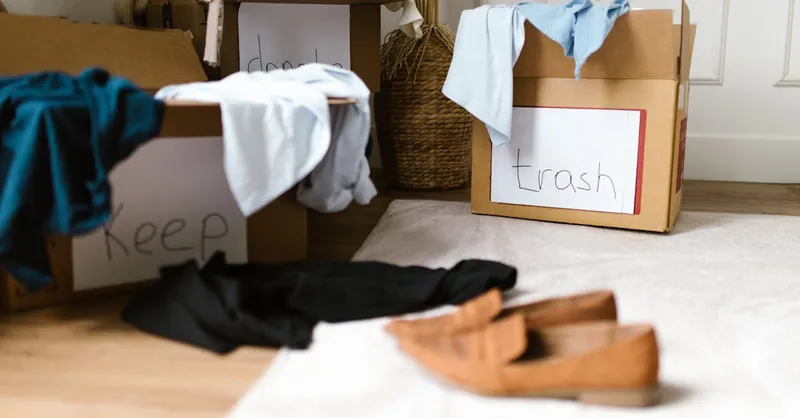
Image courtesy of RDNE Stock project
Implementing the One-In, One-Out Rule: Preventing New Clutter with Mindful Consumption
One of the most effective strategies to maintain a clutter-free home after decluttering is to adopt the One-In, One-Out Rule. This simple yet powerful approach means that for every new item you bring into your space, you commit to letting go of an existing one. By deliberately limiting possessions, you prevent the natural tendency for things to accumulate over time, supporting a lifestyle centered on mindful consumption and intentional living.
How the One-In, One-Out Rule Supports Minimalism and Clutter Prevention
The appeal of this rule lies in its ability to create balance and accountability for your belongings. Instead of passively allowing new purchases or gifts to add to your home without thought, the One-In, One-Out Rule encourages a pause to consider if the incoming item truly deserves a place in your life. This habit:
- Prevents unchecked clutter growth by maintaining a stable number of possessions.
- Promotes thoughtful decision-making regarding what you bring into your environment.
- Encourages regular evaluation of your belongings and helps avoid emotional hoarding.
- Fosters gratitude and satisfaction with what you already own, reducing impulse buying.
Practical Tips for Applying the One-In, One-Out Rule Daily
To successfully implement this rule, integrate it into your purchasing and organizing habits with the following steps:
- Before acquiring anything new, ask yourself: "Do I need this? Will it truly enhance my life?"
- Identify an item to remove before or immediately after bringing in a new one—donate, recycle, sell, or gift it.
- Apply the rule across all categories: clothes, kitchenware, books, gadgets, and even digital files.
- Use reminders or journals to track what comes in and goes out, reinforcing mindful behaviors.
By making the One-In, One-Out Rule a cornerstone of your minimalist philosophy, you build a sustainable barrier against clutter’s slow return. This method not only keeps your physical space clear but also aligns your lifestyle with values of simplicity, intentionality, and conscious consumption. Embracing this rule helps ensure that your home remains a calming sanctuary, reflective of your thoughtful approach to possessions and wellbeing.
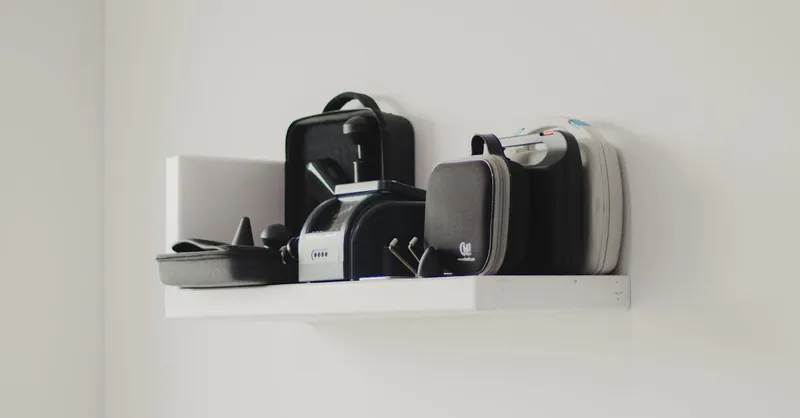
Image courtesy of Juan Manuel Montejano Lopez
Organizing with Purpose: Designing Storage and Organization Systems That Fit Your Space and Lifestyle
After decluttering, the key to sustaining a clutter-free home lies in creating storage and organization systems tailored to your unique space and daily habits. Purposeful organizing transforms tidying from a chore into a seamless part of your routine, making it easier and more sustainable to maintain order. When storage solutions are thoughtfully designed, every item has a designated place that’s intuitive and accessible, reducing the temptation to let things pile up.
Principles of Purpose-Driven Organization
-
Assess Your Space and Lifestyle Needs
Begin by analyzing how you use each room and pinpoint areas where clutter typically accumulates. Consider your routines, storage constraints, and the frequency of item usage. For example, if you work from home, your desk area requires different solutions than your kitchen or entryway. Tailoring storage based on function increases efficiency and encourages consistent tidying. -
Maximize Accessibility and Visibility
Organize items so that frequently used belongings are easy to reach, while rarely needed things can be stored out of sight. Clear containers, open shelving, or labeled baskets improve visibility, reducing the effort needed to find or put away items. When storage is user-friendly, it naturally supports lasting tidiness. -
Create Zones for Different Activities
Designate specific zones for activities such as reading, cooking, or crafting. Each zone should include storage that fits the type of items involved, streamlining the cleanup process and preventing crossover clutter. For example, keep books and reading glasses in a cozy nook with a small shelf and basket, rather than scattered throughout the living room. -
Incorporate Multi-Functional Furniture and Storage Solutions
Choose furniture pieces with built-in storage or modular organizers that adapt to your changing needs. This approach maximizes space while maintaining a minimalist aesthetic, avoiding excess furniture that can add to visual clutter.
Sustainable Organizing Habits to Maintain Order
- Regularly Reassess Your Systems: As your lifestyle evolves, so should your storage. Schedule quarterly reviews to declutter and reorganize, ensuring your systems remain a perfect fit.
- Label Everything: Clear labels add a layer of accountability and simplify tidying for everyone in the household.
- Adopt a “Return to Home” Practice: Cultivate the habit of always returning items to their designated spots immediately after use to prevent clutter buildup.
By designing storage and organization systems with clear intent and adaptability, you empower yourself to effortlessly maintain a clutter-free environment that supports a minimalist lifestyle and enhances daily living. This mindful approach to organizing not only preserves your decluttered space but also fosters long-term simplicity and peace of mind.
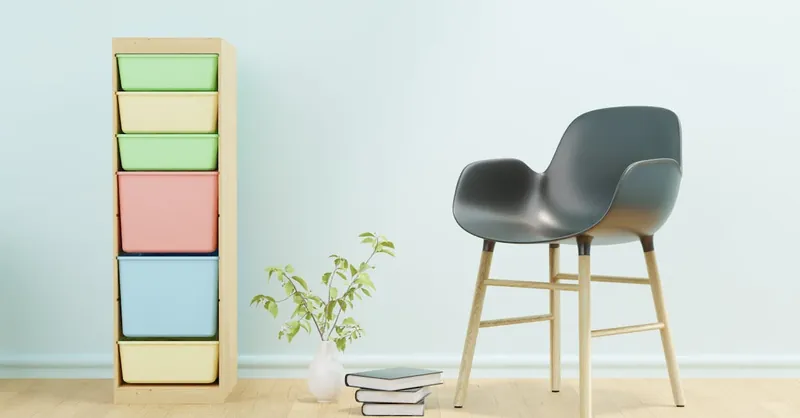
Image courtesy of dada _design
Setting Boundaries for Incoming Items: Strategies to Control Mail, Gifts, Purchases, and Digital Clutter
A crucial step to maintaining a clutter-free home after decluttering is learning to set firm boundaries around the items that enter your space. Without conscious control, everyday influxes like mail, gifts, purchases, and digital files can quietly accumulate, undermining your efforts and cluttering your environment. By implementing clear strategies to manage what comes in, you create a powerful first line of defense against clutter’s return and support a minimalist lifestyle focused on intentional living.
Managing Physical Items: Mail, Gifts, and Purchases
Incoming physical items often sneak into our homes unnoticed, so it’s essential to establish rules and systems that minimize unnecessary additions:
- Control Your Mail Intake
- Opt for electronic statements and unsubscribe from promotional mailings to reduce paper clutter before it arrives.
- Create a dedicated mail sorting station and immediately sort through mail to recycle junk and file or action important documents.
-
Commit to a "read and remove" habit daily to prevent paper piles from forming.
-
Set Clear Gift Boundaries
- Communicate your preferences to family and friends by suggesting experiences or consumable gifts instead of objects.
- When receiving gifts, honestly assess whether the item fits your lifestyle or if it can be swapped, donated, or regifted.
-
Limit sentimental clutter by choosing to preserve memories through photos or digital keepsakes rather than physical items.
-
Practice Mindful Purchasing
- Before buying, ask yourself: “Do I really need this? Does it add meaningful value to my life?”
- Avoid impulse buys by implementing a 24-hour waiting period, giving yourself time to reflect on purchases.
- Embrace quality over quantity, investing in versatile, multi-functional products that serve multiple purposes.
Controlling Digital Clutter: Inbox, Files, and Notifications
Clutter isn’t just physical—digital clutter disrupts mental clarity and organization. Setting boundaries in your digital life is key to preserving the simplicity you desire:
- Regularly Unsubscribe and Declutter Your Inbox: Reduce email overload by unsubscribing from newsletters or marketing emails that no longer serve you. Archive or delete messages promptly to keep your inbox manageable.
- Organize Files and Delete Unnecessary Data: Maintain a consistent system for digital documents, photos, and downloads with clearly labeled folders, and schedule periodic cleanups.
- Limit Notifications and Social Media Consumption: Turn off non-essential alerts to minimize distractions and prevent digital overwhelm that can spill over into physical clutter habits.
By proactively setting boundaries for both physical and digital items coming into your life, you not only halt clutter at the source but also cultivate a mindset of intentional acceptance. This approach aligns perfectly with minimalist values, helping you preserve the clarity and calm of your decluttered home long-term.
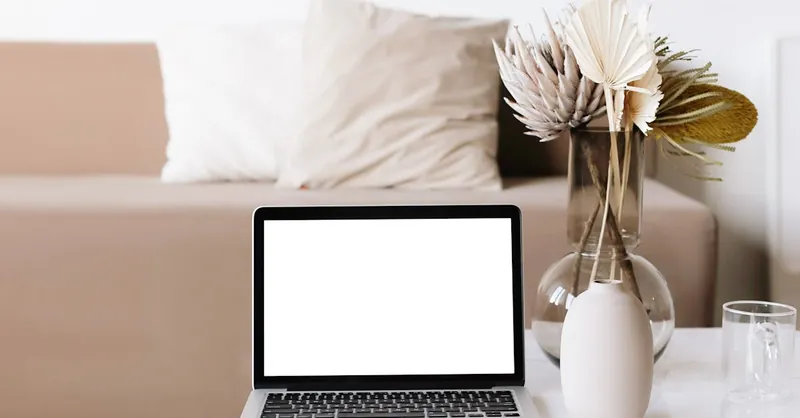
Image courtesy of Hanna Pad
Mindful Consumption and Intentional Purchasing: Evaluating New Items Critically to Reduce Impulse Buys
One of the most powerful habits to maintain a clutter-free home after decluttering is mindful consumption—carefully evaluating every potential new item before it crosses your threshold. In today’s world of constant advertising and online shopping convenience, impulse buying is a major driver of clutter accumulation. By practicing intentional purchasing, you take control over what enters your life, ensuring that each new possession aligns with your minimalist values and truly enhances your lifestyle.
Before making any purchase, develop a critical mindset by asking yourself key questions such as:
- Do I genuinely need this item?
- Will it add meaningful value or joy to my daily life?
- Do I already own something similar or that can serve the same purpose?
- Can I afford to invest in quality over quantity?
- Am I buying to fill an emotional void or external pressure?
This thoughtful pause creates space between desire and action, reducing the likelihood of impulse or unnecessary buys. Employing strategies like a 24-hour waiting period or maintaining a “wish list” before committing helps you distinguish between fleeting wants and lasting needs.
Additionally, being selective about where and how you shop can further cultivate mindful purchasing habits:
- Prioritize stores or brands that emphasize sustainability, durability, and ethical production.
- Opt for versatile, multi-functional items that minimize clutter while maximizing utility.
- Avoid sales or promotions that encourage buying more than necessary—focus instead on purchasing only what supports your simplified life.
By embracing intentional purchasing and critical evaluation of new items, you curb the constant inflow that leads to clutter, honor your minimalist journey, and strengthen your home's role as a sanctuary of calm and clarity. This approach not only protects your physical space but also fosters a deeper connection between your possessions and personal values, making simplicity an achievable, lasting practice.

Image courtesy of Anna Tarazevich
Creating Decluttering Checkpoints: Scheduling Seasonal or Quarterly Reviews to Reassess Possessions and Prevent Buildup
Maintaining a clutter-free home is an ongoing process that requires regular reassessment of your possessions and organizational systems. One of the most effective strategies to sustain minimalism after decluttering is to establish decluttering checkpoints, scheduled as seasonal or quarterly reviews. These intentional moments allow you to pause, reflect, and decisively evaluate what still aligns with your lifestyle, preventing gradual accumulation and unnoticed clutter buildup over time.
By setting predictable checkpoints, you create a recurring opportunity to:
- Identify items no longer serving a purpose and make clear decisions to donate, recycle, or discard them.
- Reassess storage solutions and organization tactics to ensure they continue fitting your evolving habits and space.
- Reinforce your minimalist mindset by consciously examining each area with fresh eyes, which helps resist complacency and accumulation of unnecessary items.
Establishing these periodic reviews also reduces overwhelm by breaking down the maintenance of clutter-free living into manageable, scheduled tasks rather than allowing clutter to accumulate unnoticed. To get started, mark these decluttering sessions clearly in your calendar, treating them as non-negotiable appointments with your home’s simplicity and wellbeing. Align your checkpoints with natural shifts in your year, like spring cleaning, after holiday seasons, or the start of a new quarter, so they feel purposeful and motivating.
Incorporating seasonal or quarterly decluttering reviews reinforces long-term success by embedding consistent reflection and action into your routine. This system empowers you to maintain clarity and calm in your living environment, making minimalism an enduring part of your lifestyle rather than a one-time project.
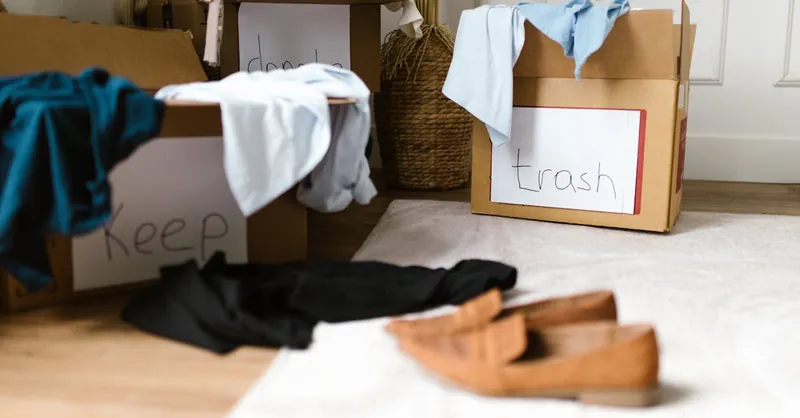
Image courtesy of RDNE Stock project
Involving the Household or Family in Clutter Prevention: How Shared Responsibility and Communication Help Maintain a Clutter-Free Home
Maintaining a clutter-free home is far easier and more sustainable when everyone in the household shares responsibility and practices open communication. Whether you live with family, roommates, or a partner, involving all members in clutter prevention fosters a sense of collective ownership and respect for the space. This collaborative approach not only lightens individual workloads but also reinforces consistent habits that keep clutter from resurfacing.
Encourage Shared Responsibility with Clear Roles and Expectations
Establishing clear, agreed-upon roles for tidying and organizing helps ensure that clutter hotspots are managed regularly by all members. Simple strategies include:
- Assigning zones or tasks such as mail sorting, kitchen cleanup, or organizing common areas to specific individuals.
- Setting shared rules about putting things away immediately after use, limiting personal items in common spaces, and respecting others’ designated storage.
- Creating family or household meetings to discuss clutter challenges, celebrate wins, and adjust systems collaboratively.
When everyone understands their contribution to maintaining order, clutter is less likely to accumulate unnoticed.
Foster Open Communication and Consistency
Regular communication about clutter prevention goals and challenges keeps the entire household aligned and accountable. Encourage dialogue by:
- Sharing decluttering progress and struggles to motivate and support one another.
- Discussing new incoming items or purchases before bringing them home, helping to apply mindful consumption collectively.
- Revisiting and updating organizational systems together, so they reflect the evolving needs and preferences of all household members.
By nurturing a culture of cooperation and transparency, you transform clutter control from a solo burden into a positive, shared lifestyle practice.
Involving your household in clutter prevention not only strengthens your minimalist environment but also deepens relationships and mutual respect, making your home a calm, organized sanctuary for everyone who lives there.

Image courtesy of Blue Bird
